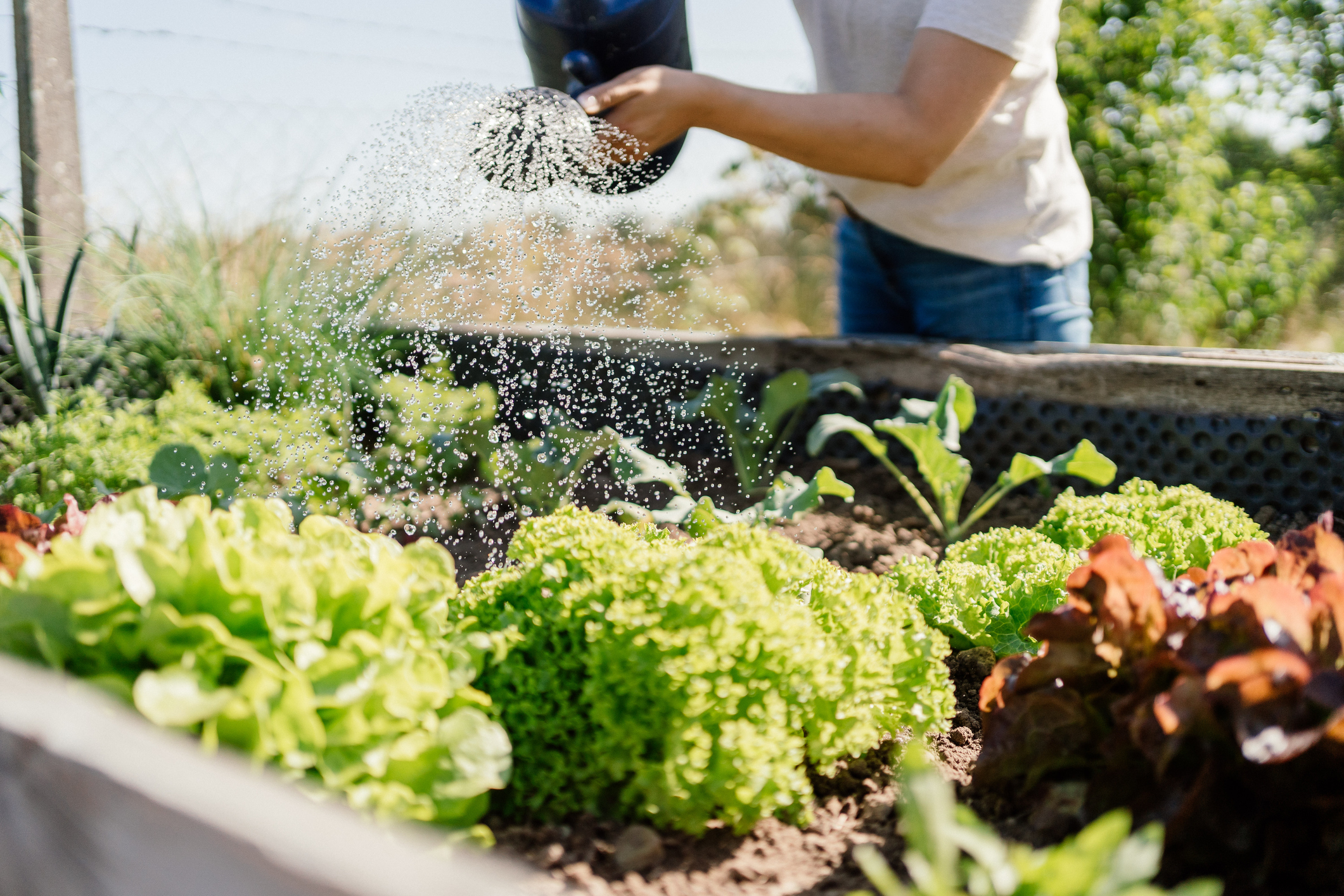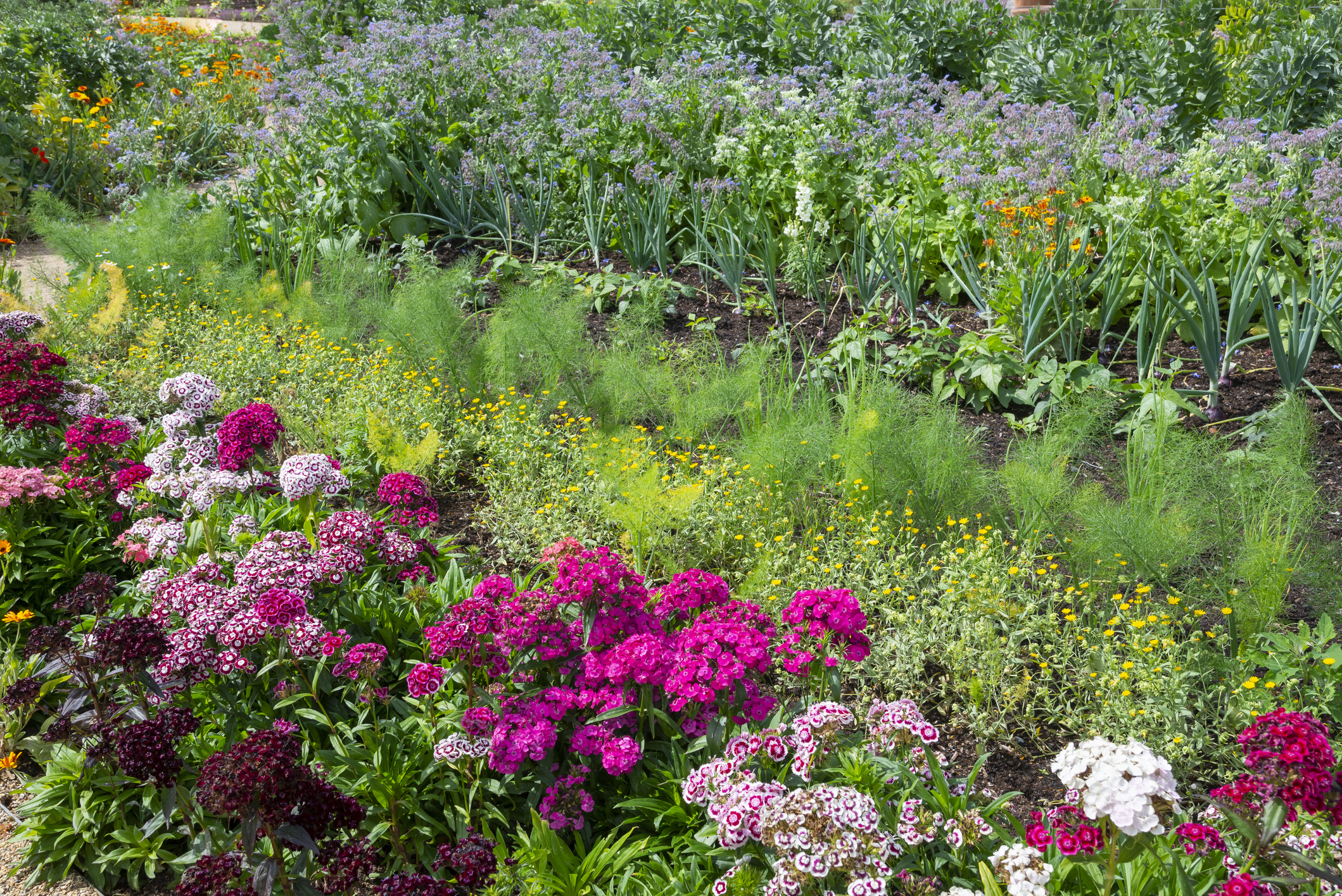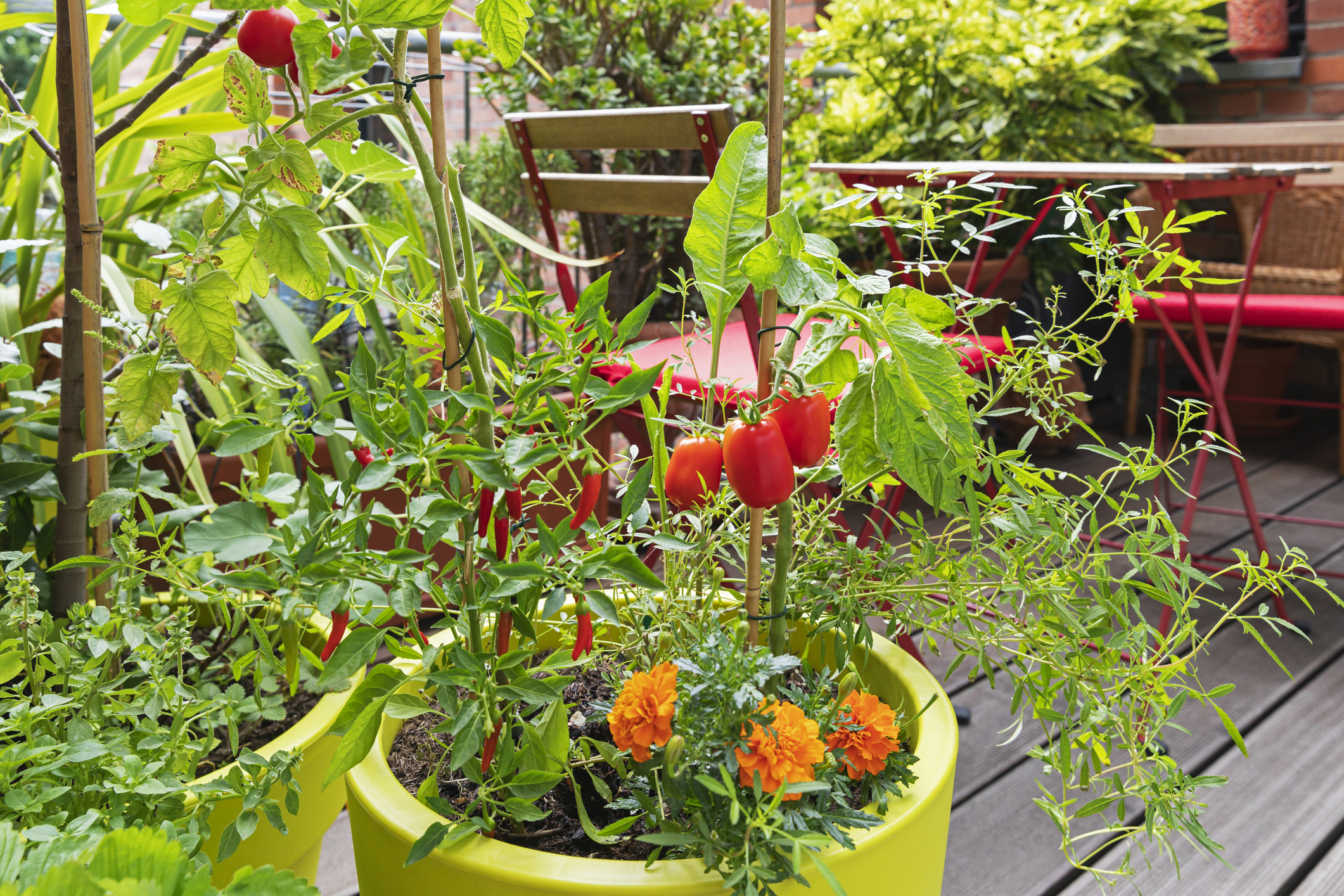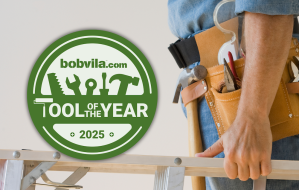

We may earn revenue from the products available on this page and participate in affiliate programs. Learn More ›
Gardeners often feel as though they need to focus on planting either ornamentals or edibles, but integrating both is now a popular trend in the gardening sphere. This approach even made it to the top of Monrovia’s 2025 trends list for garden design this season.
Instead of keeping fruit, vegetables, and herbs separate from ornamental landscapes, feel free to blend them with decorative florals to create an alluring, yet functional haven. “Edible-ornamental gardening is more than a trend, it’s a way of life towards intention, beauty, and utility,” says Matthew Wilson, gardening expert, horticulturist, and owner of Handy Gardeners in the United Kingdom. More gardeners are embracing the idea of growing their own food while enhancing the aesthetic of their outdoor spaces.
We tapped some gardening experts to find out why blending ornamentals and edibles is a current landscaping trend, guidelines for achieving this look, examples of the best plants to group together, and tips for maintaining both edible and ornamental plants in the same space.
Why This Approach Is Trending Now
Edible-ornamental gardening is about more than just appearance—it’s about values. “Homeowners today are driven by sustainability, health, and self-reliance,” explains Wilson. “The garden is no longer just a visual backdrop; it’s a working ecosystem.”
People want their outdoor space to give them something tangible, such as fresh herbs and vegetables for cooking and flowers to attract pollinators and brighten up their home with floral arrangements. Wilson believes this approach also speaks to a deeper desire for connection to nature—especially in post-pandemic life, in which the home has become a sanctuary.
Another reason for this trend now is practical: rising prices at the grocery store. The economic benefits of growing our own food are clear, and more people recognize that. Not to mention, homegrown food is fresher and helps people live a more sustainable and healthy lifestyle overall.

Tips for Achieving This Look in Your Garden
While it might seem simple to incorporate both edibles and ornamentals throughout your garden, there are some guidelines to keep in mind to avoid your garden looking like an unorganized mess. “Think like a landscape architect—form and function are your guiding principles,” says Wilson.
Here are some specific design techniques:
- Choose colorful edibles like red leaf lettuce and rainbow chard.
- “Use layers by combining plants with complementary textures, colors, and growth habits,” says James S. Mastaler, PhD, founder and CEO of Pistils & Pollen, a digital platform and online community based in Chicago, Illinois, that helps new plant parents and urban gardeners grow with confidence. Try tall plants in the back and herbs and lettuces on the ground.
- Use repetition of color or form to create cohesion while still maintaining diversity.
- Plant purple basil or something similar along a walkway, not just for color but also to release aroma as you walk past, suggests Wilson.
- Integrate upright edibles like leeks or chard in symmetrical borders for height and drama, says Wilson.
- In container gardens, mix edibles like lettuce or kale with cascading nasturtiums or upright salvia to create a space that feels intentional and dynamic, says Mastaler.
- Add a raised bed to highlight and elevate some vegetables and herbs.

Effective Plant Groupings for an Integrative Garden Design
Selecting the right plants for your garden is a huge part of making this style work. In addition to considering soil type, local climate conditions, and available space, you’ll want to choose a variety of flowers, shrubs, vines, fruit-bearing trees, vegetables, and herbs. Keep visual interest in mind, such as color, leaf shape, texture, height, and other interesting features to garner attention. Here are a few recommended plant groupings:
- Mix traditional cottage garden favorites like hydrangeas and roses with edible plants such as blueberries, rosemary, and strawberries.
- Plant swiss chard alongside flowers.
- Use herbs like thyme and oregano as ground covers around flowering perennials.
- Plant vibrant coneflowers near raised vegetable beds to invite pollinators.
- Pair edible herbs like thyme and basil with flowering pollinator favorites such as calendula, echinacea, and salvia.
- In large containers or garden beds, mix fruiting vegetables like tomatoes with marigolds, chives, and zinnias for color and pest control benefits.
- On a balcony, grow leafy greens with flowering perennials and upright herbs.
- Mix edible flowers like nasturtiums and marigolds with vegetables to attract pollinators while deterring pests.
- Plant hydrangeas near blueberries to create a beautiful and edible hedge.
- Tuck in some strawberries or apples near roses to maximize space and create a nostalgic feel.

Maintaining Edible and Ornamental Plants in the Same Space
The key to creating a thriving garden that showcases both edibles and ornamentals is balance, says Mastaler. “Edibles often need more consistent watering and fertility, so I group plants with similar needs together,” he says. He also avoids chemical treatments, and instead relies on ecological principles like diverse plantings, healthy soil, and building a habitat for beneficial insects. Also, regular harvesting of edibles encourages continued growth and keeps the design from feeling overgrown.
Wilson highlights the importance of planning out your garden, and recommends these additional tips:
- Use edible perennials as anchors: Choose rosemary, sage, or blueberry bushes to reduce replanting.
- Treat your edibles like ornamentals: This will help keep your garden vibrant, edible, and eco-friendly all year round.
- Prune with a purpose: Trimming basil keeps it lush and deadheading nasturtiums encourages more flowers and prevents seed drop, for example.
- Plant cover crops or quick annuals after harvest: This helps prevent soil erosion and keeps the garden’s rhythm.
